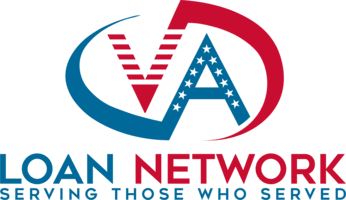Bankruptcy can feel like hitting rock bottom, but for veterans, active-duty service members, and eligible surviving spouses, it’s not the end of the homeownership dream.
VA loans, backed by the U.S. Department of Veterans Affairs, offer a lifeline with flexible guidelines that make qualifying after bankruptcy easier than with other mortgage types.
You can finance 100% of a home’s purchase price, lock in lower interest rates, and avoid private mortgage insurance (PMI)—benefits that shine even brighter post-bankruptcy.
In this comprehensive guide, we’ll explore VA loan bankruptcy guidelines, waiting periods, qualification steps, and expert tips to boost your approval odds, going beyond the basics to empower you with actionable insights.
In this Article
Can You Get a VA Loan After Bankruptcy?
Absolutely, you can get a VA loan after bankruptcy, and it’s often a better option than FHA or conventional loans due to the VA’s lenient requirements. The catch? You’ll need to navigate waiting periods and demonstrate financial recovery. The VA doesn’t automatically disqualify you for past financial troubles, but lenders will scrutinize your credit, income, and debt-to-income (DTI) ratio. The waiting period depends on whether you filed for Chapter 7 or Chapter 13 bankruptcy, and in some cases, extenuating circumstances can shorten it.
Let’s break it down to answer your key question upfront: For Chapter 7, you typically wait two years from the discharge date. For Chapter 13, you can apply after 12 months of on-time payments with court approval. Below, we’ll dive into the details, compare VA loans to other options, and share strategies to make your application stand out.
Understanding Bankruptcy Types and Their Impact on VA Loans
Bankruptcy comes in two main forms for individuals: Chapter 7 and Chapter 13. Each affects your VA loan eligibility differently, so understanding the nuances is crucial.
Chapter 7 Bankruptcy: The Fresh Start with a Catch
Chapter 7, or “liquidation bankruptcy,” wipes out most unsecured debts by selling non-exempt assets like a second car or valuable collectibles. Once the court discharges your case, you’re free from those debts, but your credit takes a hit—FICO data shows a potential drop of 160–240 points. It stays on your credit report for 10 years, signaling risk to lenders.
For VA loans, the standard waiting period is two years from the discharge date, not the filing date. However, if you can prove extenuating circumstances—like a medical crisis, job loss, or divorce—some lenders may approve you after just one year. You’ll need a detailed letter of explanation and evidence of rebuilt financial stability, like steady employment and on-time bill payments. Lenders like Veterans United often work with veterans in this scenario, offering tailored guidance.
Drawbacks of Chapter 7:
- You may lose non-exempt assets, including a home or car.
- No option to catch up on missed payments before discharge.
- Significant credit score impact, making loan approval tougher without proactive rebuilding.
Chapter 13 Bankruptcy: The Repayment Plan Path
Chapter 13, known as “reorganization bankruptcy,” lets you keep your assets while following a court-approved repayment plan, typically lasting three to five years. Once completed, remaining eligible debts are discharged. The credit impact is less severe—typically a 100–150-point drop—and it falls off your credit report after seven years.
The VA is notably lenient here. You can apply for a VA loan after 12 months of on-time payments in your repayment plan, provided you get approval from the bankruptcy court or trustee to take on new debt. This makes Chapter 13 a faster route to homeownership for veterans. However, qualifying for new credit during the repayment plan can be tricky, as your income is often tied up in debt payments, leaving little room for savings.
Drawbacks of Chapter 13:
- Limited ability to save due to ongoing debt payments.
- Qualifying for new loans during the repayment period can be challenging.
- Requires court approval for new debt, adding paperwork.
Foreclosure and VA Loans: A Related Concern
Foreclosure isn’t bankruptcy, but it often accompanies it, especially in Chapter 7 cases where homeowners can’t catch up on mortgage payments. If you’ve faced foreclosure, you can still qualify for a VA loan after a two-year waiting period from the foreclosure date. If the foreclosed home used a VA loan, your entitlement—the amount the VA guarantees—may be reduced, potentially requiring a down payment. A letter of explanation detailing the circumstances is essential, as lenders want to understand what led to the foreclosure and how you’ve recovered.
| Event | Waiting Period for VA Loan | Key Requirements |
|---|---|---|
| Chapter 7 Bankruptcy | 2 years from discharge (1 year with extenuating circumstances) | Letter of explanation, no late payments post-bankruptcy, stable income |
| Chapter 13 Bankruptcy | 12 months of on-time payments | Court/trustee approval, minimum credit score (varies by lender) |
| Foreclosure | 2 years from foreclosure date | Letter of explanation, possible entitlement reduction |
How Bankruptcy Impacts Your VA Loan Application
Bankruptcy dents your credit score, but VA loans are forgiving because the VA doesn’t set a minimum credit score. Most lenders, like Rocket Mortgage, require a score of 580–640, depending on whether you’re applying for a standard VA loan or a jumbo loan. Some lenders, like JVM Lending, accept scores as low as 550, but you’ll need a strong overall financial profile—think low DTI, steady income, and no recent late payments.
The VA also evaluates residual income and your DTI ratio, ideally below 41%. Post-bankruptcy, your credit report may show collections or late payments from before the filing, but lenders focus on your behavior since the discharge. Avoid new collections, pay bills on time, and check your credit report for errors at AnnualCreditReport.com. A secured credit card can help rebuild your score—just keep balances low and pay off monthly.
Comparing VA Loans to Other Mortgages Post-Bankruptcy
VA loans stand out for their flexibility compared to FHA, conventional, or USDA loans, especially after bankruptcy. Here’s a detailed comparison:
| Loan Type | Chapter 7 Waiting Period | Chapter 13 Waiting Period | Key Features |
|---|---|---|---|
| VA Loan | 2 years (1 year with extenuating circumstances) | 12 months with court approval | No down payment, no PMI, lower rates |
| FHA Loan | 2 years (1 year with extenuating circumstances) | 12 months with court approval | 3.5% down payment, PMI required |
| Conventional Loan | 4 years | 2–4 years | Stricter credit, 3–20% down payment |
| USDA Loan | 3 years | 12 months | No down payment, rural areas only |
VA loans shine with no down payment, no PMI, and competitive rates, making them ideal for veterans. FHA loans are close but require PMI and a down payment. Conventional loans are the toughest, with longer waiting periods and stricter criteria. USDA loans suit rural buyers but have income limits. For more information on these programs, visit the HUD Home Buying Guide.
How to Qualify for a VA Loan After Bankruptcy
After Chapter 7 Bankruptcy
- Wait Time: Two years from discharge; one year with extenuating circumstances (e.g., job loss, medical bills).
- Credit: Minimum score of 580–640 (varies by lender). No late payments or new collections since discharge.
- Documentation: Bankruptcy discharge papers, letter of explanation, proof of income (pay stubs, tax returns), and bank statements.
- Financial Stability: Stable employment and a DTI below 41%.
After Chapter 13 Bankruptcy
- Wait Time: 12 months of on-time payments, with court or trustee approval.
- Credit: Minimum score of 580–640. Some lenders may accept lower scores with compensating factors.
- Documentation: 12 months of payment records, court approval, income verification.
- Financial Stability: Must show mortgage payments are manageable alongside repayment plan.
Learn more about bankruptcy rules at the U.S. Courts Bankruptcy site.
7 Steps to Boost Your VA Loan Approval Odds
- Rebuild Credit: Pay on time, use secured credit cards, and keep utilization under 30%.
- Lower DTI Ratio: Pay down debts to improve your DTI.
- Save for Closing Costs: Prepare for 2–5% of the loan amount.
- Get Pre-Approved: Shows sellers and lenders you’re serious.
- Document Extenuating Circumstances: Medical bills, layoff notices, etc.
- Choose an Experienced Lender: VA specialists understand overlays and timing.
- Obtain Your COE: Start by requesting your Certificate of Eligibility on VA.gov.
Addressing Common Concerns: Foreclosure, Entitlement, and Refinancing
Foreclosure and VA Loan Entitlement
If a prior VA loan was foreclosed, your entitlement may be partially used, requiring a down payment or limiting the loan amount. Check your entitlement with your lender or through the VA loan limits tool.
Refinancing After Bankruptcy
You can refinance a VA loan post-bankruptcy using an IRRRL or a cash-out refinance. IRRRLs have minimal credit checks. Wait periods: two years (Chapter 7), one year (Chapter 13 with court approval). Cash-out requires a full credit review. Read more from the Consumer Financial Protection Bureau.
FAQs About VA Loans After Bankruptcy
How long do I wait for a VA loan after Chapter 7 bankruptcy?
Two years from discharge, or one with extenuating circumstances.
Can I apply for a VA loan during a Chapter 13 repayment plan?
Yes, after 12 months of on-time payments and court approval.
Does bankruptcy affect my VA loan entitlement?
No, but foreclosure on a prior VA loan might.
What credit score is needed?
Typically 580–640; some lenders go lower.
Can I get a VA loan after foreclosure?
Yes, after two years from foreclosure date.
How do I rebuild credit?
Pay on time, use credit wisely, and dispute report errors.
Do lenders follow the same rules?
No, guidelines vary. Shop around.
What documents are needed?
COE, discharge papers, proof of income, court approval (if Chapter 13).
Can I refinance after bankruptcy?
Yes, IRRRLs or cash-out, with standard wait periods.
How do I prove extenuating circumstances?
Provide documentation—medical bills, layoff notices, etc.
Why VA Loans Are Your Best Bet Post-Bankruptcy
VA loans are a game-changer for veterans, offering no down payment, lower rates, and no PMI. Compared to FHA (3.5% down, PMI), conventional (stricter credit), or USDA (rural-only) loans, VA loans offer unmatched flexibility.
Use your waiting period wisely—rebuild your credit, save, and work with a trusted VA-approved lender. To get started, visit the official VA Home Loan page to access tools, eligibility checks, and step-by-step application info.


